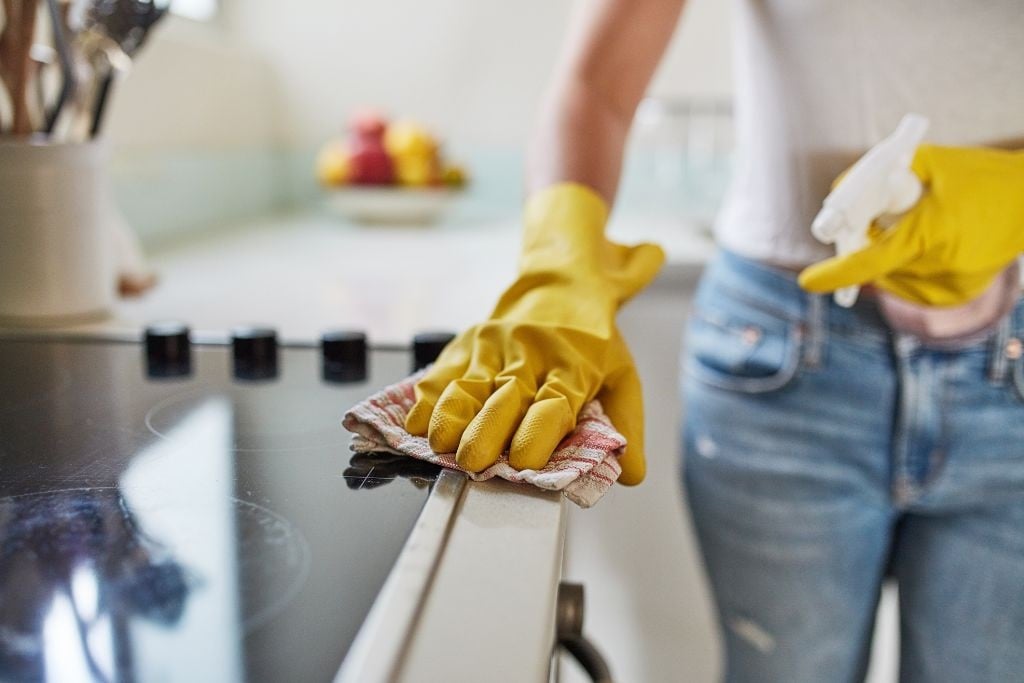Some kitchen appliances need more cleaning than others. (LumiNola/Getty Images)
- We all rely on our beloved kitchen appliances to help us get things done in our homes.
- Many of these appliances, however, are neglected when it comes to cleaning and, as a result, can harbour germs.
- Experts have shared top tips to clean and restore these appliances to their best functioning capacity.
- For more lifestyle news, go to the News24 Life front page.
While many people love spending time in the kitchen and creating their favourite dishes, they often neglect their kitchen appliances after all the cooking. Many think a quick, occasional wipe is sufficient, but this simply isn’t enough.
Poor appliance cleaning can leave them grimy, greasy, and covered in germs.
According to Carol Guedes, head of HA sales at LG Electronics South Africa, failing to keep your appliances clean could lead to unwanted results such as health concerns, higher utility bills and even shortened lifespan.
She shares: “For a cleaner kitchen environment, all it takes is the appropriate appliances and tips and tricks to prevent future problems.”
Here is a list of some of the most neglected kitchen appliances hiding in your kitchen, along with tips on restoring them to their former glory.
Microwave
In your kitchen, the microwave – a go-to for quick meals – can sometimes harbour hidden grime.
Experts caution that improper microwave usage may foster bacteria growth, especially during activities like defrosting meat or reheating in plastic containers. This misuse can result in a proliferation of harmful microbes, potentially turning your microwave into a breeding ground for germs.
ALSO READ | Hidden germ havens: Expert lists top 8 dirtiest toys and how to clean them
Try this hack to tackle this microbial hotspot: Mix water, lemon juice, or vinegar in a bowl, zap it on high for a few minutes, then wipe it down. There are also microwave models that come with an antibacterial coating for users who prefer a quick wipe to keep appliances clean.
Dishwasher
Your dishwasher, another kitchen workhorse, can paradoxically become a germ hotspot if neglected. Failure to clean your dishwasher regularly can lead to a buildup of water minerals, grime, and residual detergent.
This accumulation compromises the cleanliness of your dishes and poses potential health risks due to the growth of bacteria and mould.
Combining baking soda and vinegar can work wonders to tackle this issue effectively. Start by running a cycle with a cup of vinegar to eliminate odour and grime, then sprinkle baking soda in the bottom and run a hot water cycle for a thorough clean.
Oven
Your oven can quickly become a grime hotspot if left unattended. The buildup of grease, food splatters, and burnt residues not only affects the taste of your dishes but can also pose fire hazards. To combat this culinary chaos, a simple yet effective method involves harnessing the power of baking soda and vinegar.
Mix these two kitchen staples with a splash of water to create a paste.
Generously coat the interior of your oven with the paste, and let it work its magic for a few hours or overnight. Once the solution has had time to break down the grime, wipe it away with a damp cloth.
Fridge
In addition to harbouring unseen germs, the easiest way to know a fridge is due for cleaning is to look out for odours.
According to Guedes, overlooked spills and uncovered, expired food can contaminate your fresh produce and create an environment ripe for bacterial growth.
To combat this chaos, a deep clean with dish soap can work wonders. Begin by clearing out your fridge completely and scrubbing the interior with warm, soapy water. Remember to wash the removable shelves and drawers in the sink for a thorough cleanse.
Finish by wiping everything dry to achieve a pristine and odour-free fridge. When it comes to the freezer, while it may not need cleaning as frequently, neglecting it can also lead to unwelcome odours and freezer-burned food.
Washing machine
Your washing machine, the true hero of laundry day, can also become a haven for mould and mildew if left uncleaned.
Residual detergent, fabric softener, and moisture create the perfect environment for thriving bacteria and unpleasant odours. A simple cleaning routine can restore your trusty appliance to its pristine state.
For a top-loader, fill the washer with hot water and add bleach before running a normal cycle. Follow up with an additional cycle to ensure all traces of bleach are eliminated. If you have a front-loader, replicate the same steps but pour the bleach into the detergent compartment instead. Many modern washing machines have a built-in tub cleaning feature.

